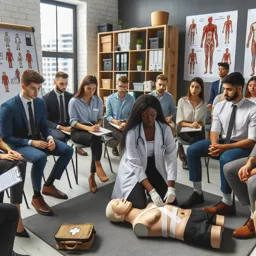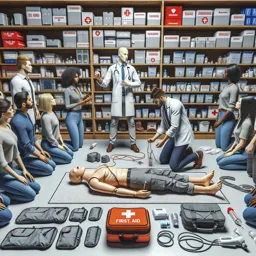Introduction
Schools are lively environments where accidents and health emergencies can occur at any time. From minor cuts to more serious injuries, having a structured first aid response is essential to ensure student safety. This guide provides step-by-step instructions for handling the most common school first aid situations, helping staff and educators act effectively until professional help arrives.
Essential Components of a School First Aid Kit
A well-stocked first aid kit is crucial for quick and effective response. Every classroom and main school area should include:
- Adhesive bandages (various sizes)
- Sterile gauze pads and adhesive tape
- Antiseptic wipes and hand sanitizer
- Disposable gloves
- Scissors and tweezers
- CPR face shield
- Instant cold packs
- Eye wash solution
- Burn ointment
- Emergency contact and medical information cards
Check supplies regularly and replenish as needed.
Managing Minor Cuts and Scrapes
- Put on disposable gloves to prevent contamination.
- Cleanse the wound with running water or an antiseptic wipe.
- Pat dry and cover with a sterile bandage or gauze.
- Advise the student to avoid touching the wound and monitor for infection.
Responding to Nosebleeds
- Have the student sit and lean forward.
- Pinch the soft part of the nose for 10 minutes.
- If bleeding lasts longer than 20 minutes, seek medical assistance.
Handling Minor Burns
- Cool the burn under running water for at least 10 minutes.
- Remove tight items near the burn but do not remove clothing stuck to the skin.
- Cover loosely with a clean, non-fluffy dressing.
- Do not use creams or ice.
- Refer to medical staff if the burn involves the face, hands, or genitals.
Recognizing and Reacting to Allergic Reactions
- Mild reactions (rash, sneezing): Monitor the student and consult the school nurse.
- Severe reactions (difficulty breathing, swelling): Administer an epinephrine auto-injector if available and call emergency services immediately.
Responding to Fainting or Loss of Consciousness
- Lay the student on their back and elevate their legs if possible.
- Ensure fresh air and loosen tight clothing.
- Monitor breathing and be ready to perform CPR if needed.
- Do not offer food or drink until the student is fully alert.
- Report and document the incident.
Conclusion: Keeping Schools Safe Through Preparedness
Quick, confident first aid saves lives. By training staff, keeping equipment accessible, and practicing emergency procedures, schools can turn potentially dangerous situations into well-managed responses, protecting every student’s wellbeing.




























